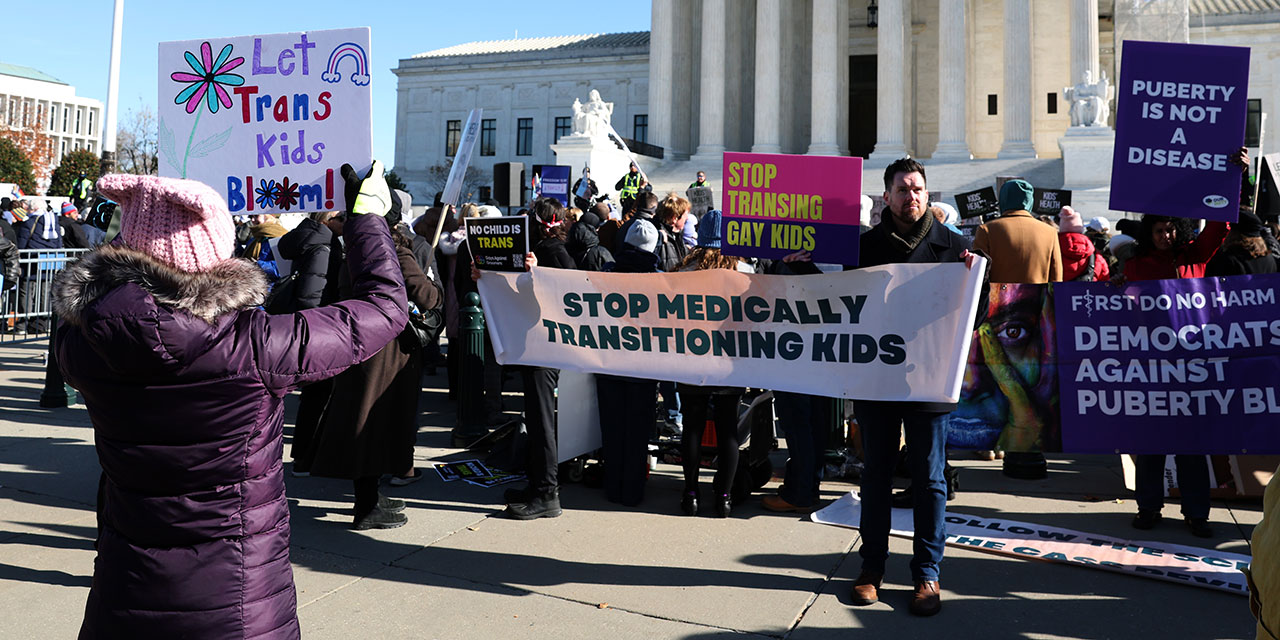
The Department of Health and Human Services’ new report on best practices for treating pediatric gender dysphoria is a dispassionate and evenhanded analysis of an extraordinarily complex issue. Its overview of 17 systematic reviews—the highest standard of medical evidence—arguably offers the most comprehensive analysis of pediatric medical transition to date. Its other sections also provide needed clarity on the ethical, philosophical, and institutional dimensions of gender medicine.
Yet, mere hours after the release of this 409-page report on May 1, the American Academy of Pediatrics (AAP) issued a press release condemning it for relying on a “narrow set of data and perspectives” and for “misrepresent[ing] the current medical consensus and fail[ing] to reflect the realities of pediatric care,” among other alleged faults.
Finally, a reason to check your email.
Sign up for our free newsletter today.
Ironically, the AAP’s knee-jerk response—and its continued endorsement of gender medicine in the face of low-quality evidence—only serve to strengthen the HHS report’s specific findings that medical societies like the AAP have played a major role in the ongoing scandal of the treatment of pediatric gender-transition in the U.S. Specifically, the report’s analysis of medical associations and their internal dynamics sheds light on the AAP’s reluctance to acknowledge the necessity of medical reforms “even when confronted with strong evidence of their urgency.”
At the heart of this story is institutional capture. As the HHS report notes, the public tends to assume that medical associations “prioritize the best interest of patients and society.” In practice, however, these organizations function as trade groups, not as official arbiters of medical standards. While many individual members have their patients’ best interests at heart, the associations themselves often follow incentives aligned with their members’ professional interests.
This dynamic is especially visible in the field of gender medicine. Because pediatric gender medicine is relatively new, medical associations frequently defer to ideologically insular subcommittees on LGBT issues when crafting treatment recommendations. The problem, the HHS report argues is that these subcommittees tend to be echo chambers where “dissent is suppressed” and “confirmation biases go unchecked.” Specialists on these subcommittees also often have conflicts of interest that make them less open to alternative perspectives. These conflicts of interest can be intellectual, as when specialists endorse “affirming care” as a matter of human rights, or financial, as when their livelihoods depend on providing sex-rejecting interventions. A shift away from the affirming-care model would directly threaten their livelihood—now a multibillion-dollar industry.
These incentive structures help explain how the AAP ended up issuing a 2018 position statement endorsing “affirming care” that was conceptualized, drafted, reviewed, and revised by a single junior pediatrician, Jason Rafferty, a relatively new physician not high up within the AAP hierarchy. Crucially, the AAP’s 2018 position statement was not based on evidence reviews commissioned by the organization.
Rather, the AAP’s 2018 statement politicized the treatment of sex-related distress, framing it as a civil rights issue rather than a medical one. The statement goes so far as to recommend that “affirming care” be made available to any youths “who identify as TGD” (transgender and gender diverse)—a radical departure from treatments aimed at addressing an underlying pathology. The statement also quietly shifted the conversation away from the need for mental-health screening, controversially claiming that, “if a mental health issue exists, it most often stems from stigma and negative experiences rather than being intrinsic to the child.” Rafferty’s assertion signals that a mental-health issue is not regarded as a sign to conduct further assessments to ensure diagnostic clarity. The assertion also represents a significant departure from the Dutch protocol, which pioneered medical transition for sex-distressed youth. Despite its many methodological flaws, that protocol established clear eligibility criteria for treatment, including the exclusion of individuals with serious psychiatric disorders.
The AAP’s rubber-stamping of the ideological reframing of sex-related distress has had serious consequences for patients. Both Rafferty and the AAP are named as defendants in a medical-negligence lawsuit filed by Isabelle Ayala, a detransitioner who alleges that she was approved for testosterone therapy at age 14 after a single, hour-long assessment—despite a history of complex psychiatric issues and sexual assault. Rafferty is also a defendant in a separate lawsuit brought by another detransitioner, Layton Ulery. That suit accuses the AAP of civil conspiracy, fraud, and medical malpractice, charging that the organization’s ideological approach to gender medicine resulted in iatrogenic harm—that is, harm caused by the medical procedures themselves.
Despite this, in 2023 the AAP reaffirmed its 2018 position statement without an evidence review, even as the U.K., Finland, and Sweden were formally reviewing and updating their treatment practices for sex distress. Though it promised an evidence review in 2023, the AAP has yet to release one.
Along with the AAP, the World Professional Association for Transgender Health (WPATH) and the Endocrine Society have played the largest role in informally regulating gender medicine in the U.S. As the HHS report argues, these organizations endorse “affirming care” in their treatment guidelines despite low-quality evidence. In turn, other medical associations uncritically adopt their guidelines, choosing to defer to their ostensible expertise.
As with the AAP, treatment recommendations in WPATH’s latest guidelines are not based on systematic reviews. While the Endocrine Society’s guidelines do rely on such reviews, they concern adults, and their treatment recommendations are classified as “discordant,” meaning that they were issued without the benefit of high-quality supporting data.
The HHS report notes that WPATH crafted its guidelines with the explicit goal of influencing policy and strengthening its position in future litigation. WPATH leadership was even advised by “social justice lawyers” against commissioning evidence reviews, as the limited available evidence would leave them “in an untenable position in terms of affecting policy or winning lawsuits.”
WPATH did eventually commission researchers at Johns Hopkins to conduct systematic reviews on pediatric gender medicine. However, it reportedly suppressed these reviews when the findings failed to support its predetermined commitment to expanding access to medical interventions.
The HHS report also highlights a pattern of “circular referencing and mutual endorsements,” in which WPATH and the Endocrine Society cite one another’s guidelines to shape similar documents, creating the appearance of a broader consensus than actually exists. We also now know that President Biden’s Assistant Secretary for Health, Rachel Levine, along with four AAP members, pressured WPATH into removing age minimums for transition surgeries in its most recent guidelines.
This manufactured “consensus” both stalls the development of better standards of care and undermines public trust by forcing sex-distressed youth and their families to make medical decisions under false pretenses. Medical “practice reversals”—when previously accepted treatments are abandoned in light of new and better data—are common. Sweden, Finland, and the U.K. have already changed course on pediatric gender medicine. Given the less centralized nature of health care in the United States, medical societies like the AAP have an even greater responsibility to be transparent about the quality of the evidence informing their recommendations.
If AAP leadership ever gets around to reading the HHS report—carefully, this time—it should check out the ethics section first.
Photo by Kevin Dietsch/Getty Images
Source link
















